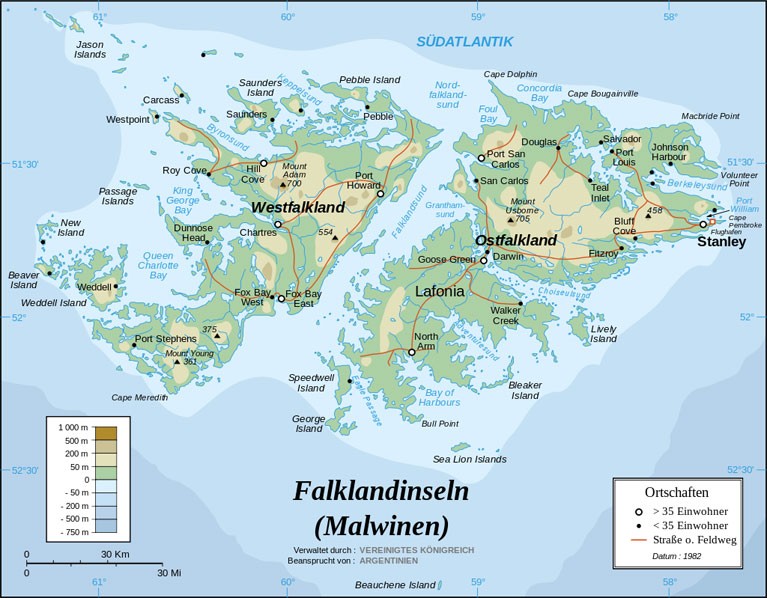A short summary of lesser-known facts about the Sea Harrier Air War.
- Many books have been written about the Falklands Air War by non-military laypersons who class themselves as aviation specialists but have listened to third parties who were not even present in the theatre of combat. This has undoubtedly led to a level of subjective wokery (WithOut Knowledge or Expertise) that is not conducive to authenticity.
- What they did not discover, reveal or acknowledge for the most part includes:
- Following its commissioning in 1980 at RNAS Yeovilton, 800 Naval Air Squadron (NAS) could not come to terms with operating the Sea Harrier aircraft weapon system, air intercept radar and navigation system effectively by day or night. They consistently refused offers of assistance and technical guidance from the Headquarters Squadron, then under my command.
- They covered their professional deficiencies by spreading the word that Sharkey Ward and his Intensive Flying Trials Unit, 899 Headquarters Squadron and his 801 Squadron frontline team “must be lying in their formal reports about the excellent performance of those systems” (801 NAS was the formally appointed Squadron for the Blue Fox Radar Trials).
- When they embarked in HMS Hermes, 800 NAS continued to have no faith in these systems, particularly the Blue Fox Radar. Their inability to get satisfactory results had the long-term detrimental effect of persuading the Captain, Lyn Middleton that “the Sea Harrier was not capable of autonomous air-to-air intercept and that its main utility was in surface and ground attack”.
- This false understanding of the aircraft’s already proven air-to-air capability was passed on to the Admiral’s staff who had no other source of readily available information to question the resident Squadron’s advice.
- This led to the Flagship ignoring the Anti Air Warfare Control ship, HMS Invincible’s air defence orders which designated low level Combat Air Patrol (CAP) stations for all Sea Harriers protecting the San Carlos Water Beachhead. Instead, Hermes ordered its fighter aircraft to maintain high level CAP over the Amphibious Operating Area, with further orders not to transmit on the Blue Fox Radar.
- As a result and specifically, many low-level Combat Air Patrol stations protecting the San Carlos Water beachhead were frequently left unfilled. It was mainly through these empty CAP Stations that enemy air attack missions ingressed, delivered their attacks and caused major casualties to warships and personnel – whether in San Carlos Water, Falkland Sound or the open ocean protecting the Carrier Battle Group. Some of these casualties could have been avoided or at least minimised if HMS Invincible’s Anti-Air Warfare Control orders had been obeyed.
- In sharp contrast, the smaller number of 801 Squadron Sea Harriers on low level CAP turned away a significant number of fighter bomber attacks thereby preventing the delivery of more bombs against our warships and ground forces. It is not unreasonable to argue that this low-level CAP deterrence helped prevent a glorious victory from being turned into dismal failure.
- As addressed in Strategic Defence Review 98 on the advice by Admiral Sir Jock Slater, then First Sea Lord, the terms “Air Superiority” and “Airspace Denial” were properly recognised as entirely separate entities. Despite my own early comments on this issue, post-war analysis firmly indicates that “Air Superiority” was indeed achieved by Fleet Air Arm Sea Harriers over Argentine fighter and fighter-bomber aircraft. That full “Airspace Denial” could not be achieved was a direct result of the fraudulent claims by the RAF that led to the Dennis Healey Carrier decision in the late 60s. That decision denied the Fleet Weapons System an embarked Defence Suppression, Airborne Early Warning, Air-to-Air Refuelling, SIGINT and Look-down/Shoot down capability.
- Where was the promised land-based Royal Air Force support when we needed it?
Photocredit: Eric Gaba (Sting – fr:Sting), CC BY-SA 3.0, via Wikimedia Commons


Succinct and to the point.